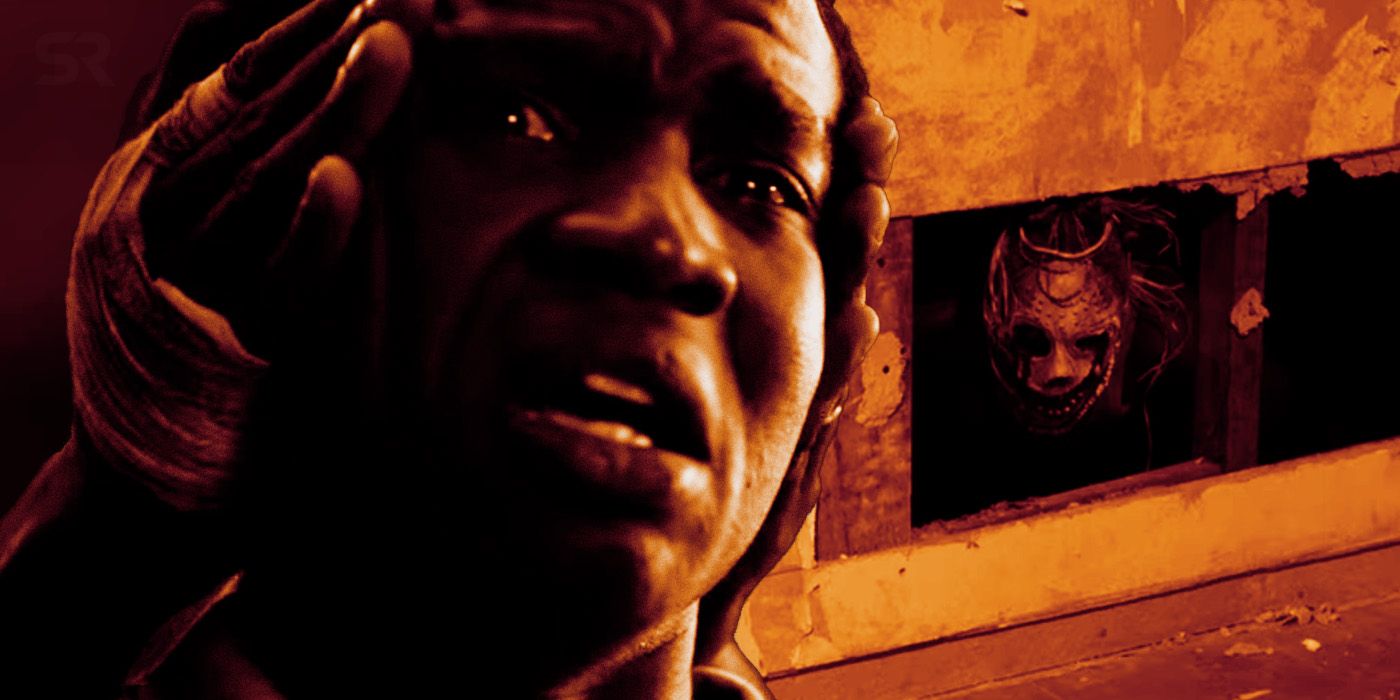
Warning: MAJOR SPOILERS ahead for His House.
In Netflix horror movie His House, a refugee couple from South Sudan move into a new home in England while they await a decision as to whether or not they'll be granted asylum. It soon becomes clear, however, that they're not alone in the house. The movie's ending brings ugly truths to the surface with a dark twist, and draws the monster that's hunting them into the light.
The feature directorial debut from British filmmaker Remi Weekes, His House blends the real-life horror of people forced to flee their home country due to violence with the classic horror trope of moving into a new house only to discover that it's haunted. But whereas most houses in horror movies were already haunted before the characters moved in, Bol (Sope Dirisu) and Rial Majur (Wunmi Mosaku) bring their ghosts with them. And it's not just ghosts that they're living with; Bol finds himself being stalked by a monster called an apeth, or night witch (Javier Botet).
The apeth isn't able to directly hurt Bol, but it first tries to persuade him to turn a knife on himself, and then attempts to persuade Rial to sacrifice him. The exchange offered is the return of their little girl, Nyagak (Malaika Wakoli-Abigaba), who drowned when they tried to reach England by boat. Bol ultimately cuts his own arm to offer himself up to the Nyagak, so that Rial can be free of the monster and be reunited with Nyagak - but there's more to their story than first meets the eye.
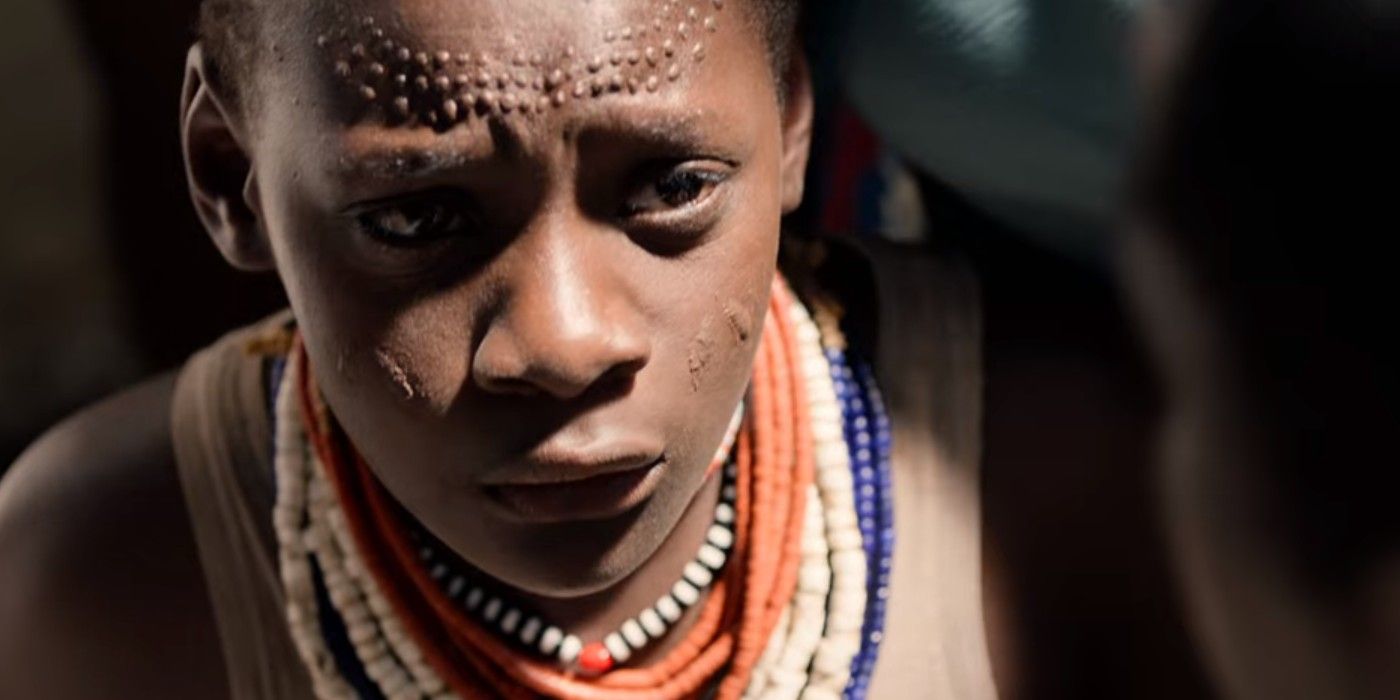
Bol and Rial's troubled minds and mixed feelings about their new home seem like a natural response for parents who have fled the danger behind them, but lost their daughter along the way. The audience is given little reason to doubt their version of the story, and Bol's troubling sightings of Nyagak paint him as a grieving father who is feeling guilty for not protecting his little girl. However, a twist towards the end of His House reveals the disturbing truth: Nyagak was not Bol and Rial's daughter. She was simply a little girl among the crowd clamoring for refugee transport, and Bol used her to secure a place for himself and Rial on the bus. As they drove away, Nyagak screamed for her real mother, who ran after the bus but failed to catch up.
Though Nyagak wasn't her own daughter, Rial grew to love her anyway and promised to protect her. But when a storm hit the boat that they were travelling in, Nyagak and many others were drowned in the ocean. Perhaps Rial hoped she could make up for Bol's crime by at least ensuring Nyagak's survival and safe arrival in England. But instead of saving her from the violence in South Sudan, Bol doomed her to another horrible death. And although he tries to put his actions behind him after arriving in his new home, Bol cannot escape what he did.
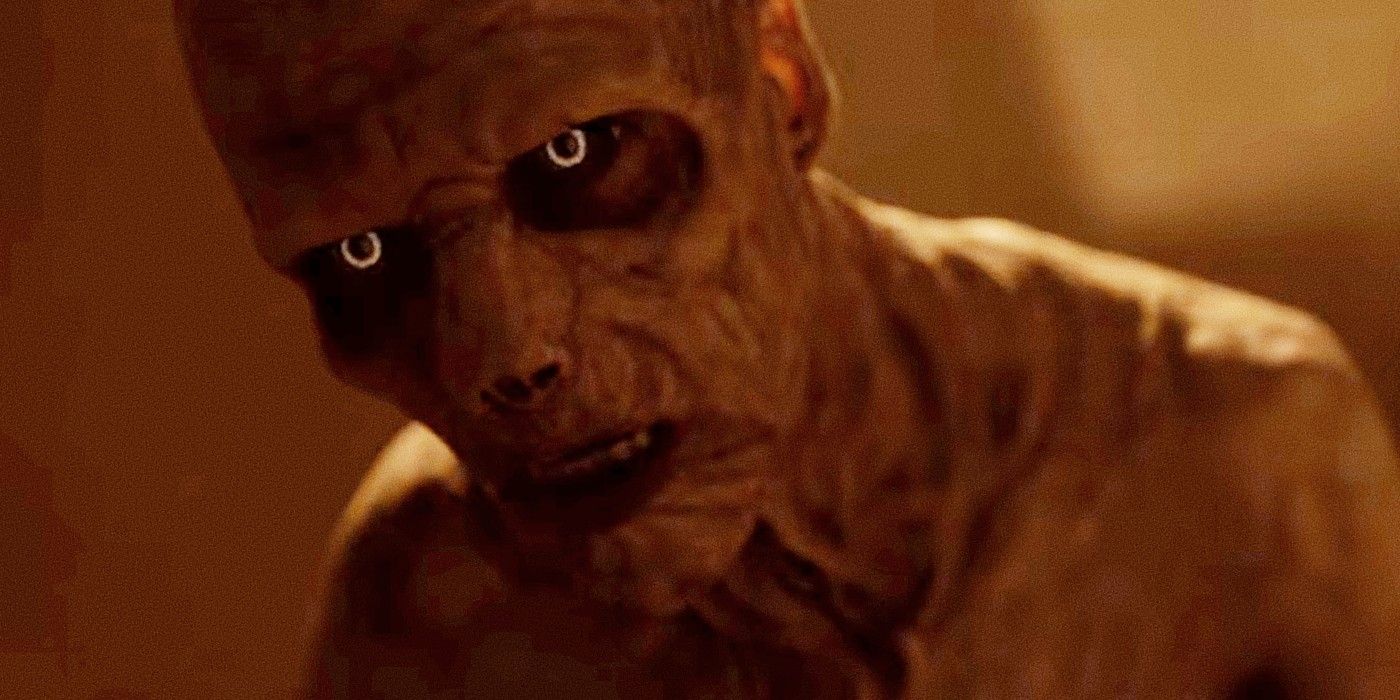
The gimlet-eyed monster of His House is explained by Rial when she tells Bol a story that her mother told her as a child. An "honorable but poor man" who once lived in her village grew so desperate for a home of his own that he began to steal from people, and one day stole from an old man who was an apeth - a night witch. The man built a house for himself, but because he had built the house with what he had stolen from the apeth, the house belonged to the night witch as well, and it would live there with him. Like the honorable but poor man in the story, Bol bought his house with something stolen: Nyagak's life.
The apeth is a cornerstone of the Dinka people of South Sudan's beliefs about witchcraft. The anthropologist Godfrey Lienhardt, who studied the religion and folklore of the Dinka, wrote about the apeth in his 1951 essay "Some Notions of Witchcraft among the Dinka." His House's scenes of the apeth and the ghosts staring at Bol and Rial, or Bol and Rial themselves looking directly into the camera, are particularly significant with regards to Dinka beliefs. A man or woman who practices witchcraft is able to cause injury or misfortune to a person simply by looking at them, and the Dinka are therefore wary of anyone who stares at them without good reason, even briefly.
After Bol cuts his arm to sacrifice himself to the night witch in His House, it gruesomely pushes its fingers under his skin, but Rial stops it before we find out what it would have done next - either consuming Bol, or possessing him. In the Dinka's language, concepts of eating and stealing are intrinsically linked. Lienhardt writes that although the apeth is said to 'eat' people, the Dinka don't use the word that literally means to eat food (cuet), but another word (cam) that refers to a different kind of eating:
"It is frequently used of extortionate traders or Dinka in authority, who may 'eat' people by wringing out of them money or animals to which they have no right, and which the victims cannot easily get back. To 'eat' a man is different from stealing from him. Theft is just taking something belonging to another, hiding it, and putting it to one's own use. The object stolen is still there to be returned if the thief is discovered. What is eaten, however, is lost, and when this word is used, the idea of the unjust deprivation suffered by the victim is uppermost."
This distinction highlights the monstrosity of what Bol did: he did not simply steal Nyagak from her mother, but "ate" her by taking her and then allowing her to drown in the ocean, so that she could never be returned. The enormity of the crime is what drew the apeth out of the ocean and attached it to Bol and Rial's new home. The night witch's promise to return Nyagak in exchange for Bol's life is likely just a trick designed to prey on Rial's grief for the little girl; once lost, she can never be recovered. Nonetheless, Rial's decision to let of Nyagak and save at the end of His House is still very significant.
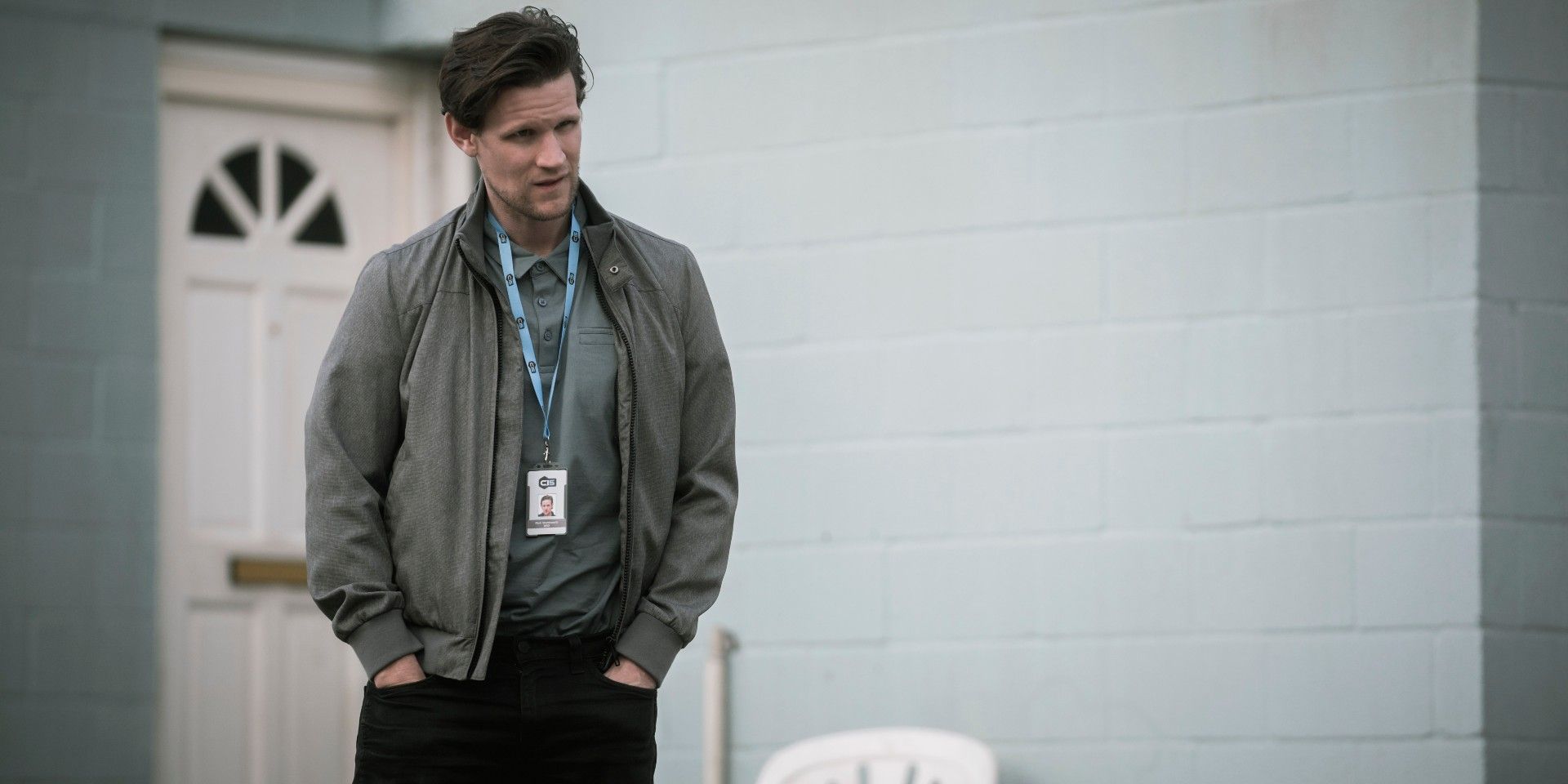
His House purposefully leaves Bol and Rial's fate ambiguous, after their case worker Mark (Matt Smith) returns with other immigration officers for an inspection. At the end of his previous visit he seemed certain that they had no chance of staying in England. But after vanquishing their witch, Bol and Rial repair the walls of the house and do everything they can to present themselves as "the good ones." Despite their complaints about the barbecue and the state of the walls, the immigration officers do not give the impression that Bol and Rial are about to be immediately deported. Instead, they must continue to face the long wait for their case to be processed. But after what they have been through, Bol and Rial are finally united in wanting to stay in the house. "This is our home," says Rial. "We are happy here," says Bol.
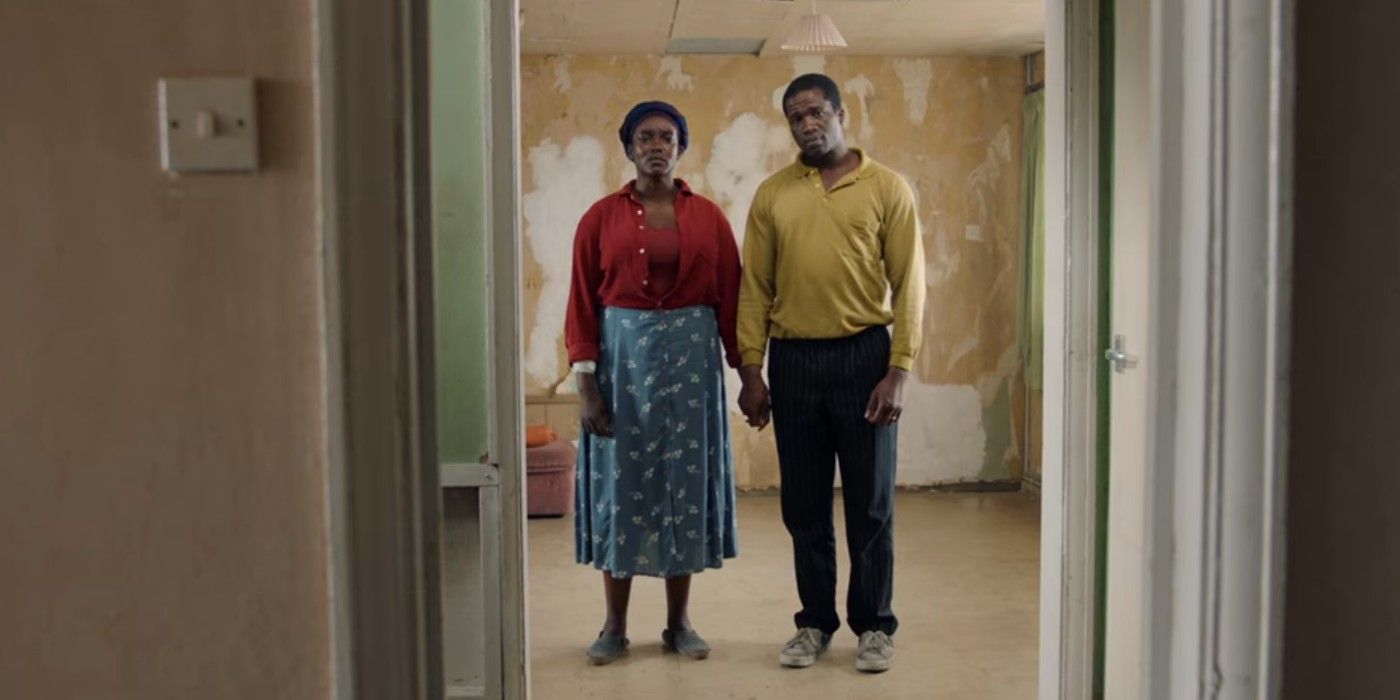
Haunted house stories are particularly compelling (and frightening) because houses are supposed to be a safe place for people to retreat to, and are therefore a difficult place to escape from. Almost every haunted house movie establishes early on that the main characters' fates are somehow tied up in their new house, whether because of financial difficulties or a deeper need to make their new home work. In The Shining, Jack Torrance's responsibilities as the caretaker of the Overlook Hotel, and the unforgiving winter weather surrounding it, mean that the family is essentially stuck there. In Netflix's horror series The Haunting of Hill House, the Crain family need to finish fixing up the house so that they can sell it and use the money to build their forever home. And in Travis Stevens' The Girl on the Third Floor, the protagonist sees the house he's renovating as a fresh start for his troubled marriage. There's always a reason why the characters cannot simply leave the first time they see a ghost.
In His House, Bol and Rial are truly stuck with their house. Not only do they not have any money to move (they're not allowed to work, and receive only £74 per week to survive on), their chances of successfully being granted asylum depend on proving that they're "one of the good ones." When Bol asks to be moved to a different house, Mark warns him that putting in the request will cause an inquiry into why they're not properly integrating. They must find a way to live in their new home, or be sent back to South Sudan.
His House has a fundamental theme of belonging. Rial tells her doctor that in order to escape being killed by either of the warring tribes back home, she gave herself the markings of both: "I survived by belonging nowhere." As asylum seekers, Rial and Bol still belong nowhere. Bol is desperate to belong in his new home and wants to forget his painful past, which is why he is so terrorized by the ghosts he sees. Conversely, Rial is not ready to let go of her past life and is comforted by the ghostly presence of people she once knew.
The ending of His House, in which Rial willingly lets go of the possibility of getting Nyagak back and saves Bol from the night witch, marks a turning point for both characters. The final scene, where they stand looking directly at Nyagak's ghost and the house fills with the ghosts of other refugees who have died in search of safety (not just those fleeing South Sudan, but people from many different countries) is a moment of acceptance. Bol accepts that he can no longer look away, and will always have to live with Nyagak and the other ghosts. "It's when I let them in, I could start to face myself," he tells Mark. Meanwhile, Rial finally accepts that she cannot go back. When the couple holds hands, the ghosts disappear, at least for the moment. Even though their future is uncertain, Bol and Rial have found a place of belonging - not in their old home or their new one, but with each other.
https://ift.tt/3oJPrSi
November 02, 2020 at 05:34AM




